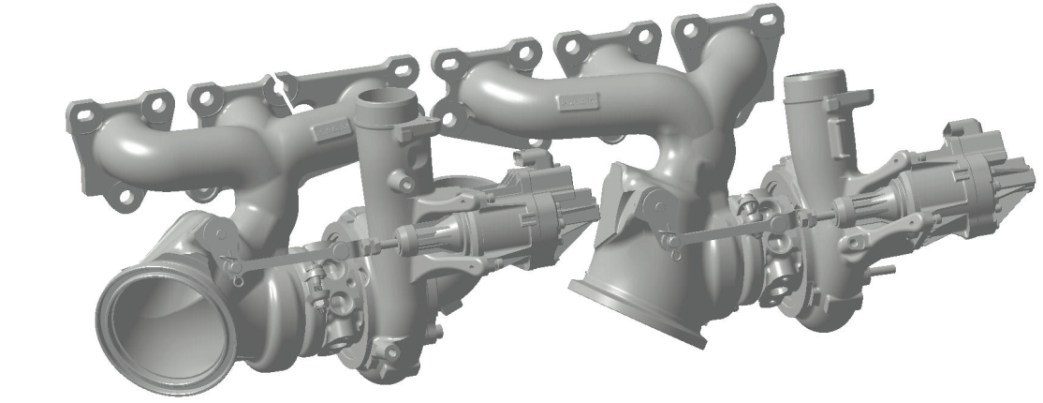Bi-turbo technology
In case a larger displacement naturally aspirated engine will be updated by a downsized version, i.e. smaller displacement in combination with super-/turbocharging, bi-turbo solutions can be a very attractive option. By doing so, one can still achieve the same (or even better) engine performance without a penalty in low-end torque or responsiveness when compared to a larger single turbocharger solution.
Functionality
Bi-turbo technology is more attractive for mid-size to larger engine ranges, typically > 2.5 liter engine displacement. Bi-turbo applications are characterized by parallel arrangements and differ from 2-stage turbocharger concepts in a sense that these are connected in series arrangements.
The bi-turbo concepts do not differ much from more conventional single turbocharger systems. In a bi-turbo configuration a relatively large single turbocharger is replaced by two smaller turbochargers which both operate according to the same operating principle. Inherently, the smaller turbochargers are characterized by a reduction of rotational inertia compared to the larger single turbocharger.
Another advantage of bi-turbo concepts is a decrease in exhaust manifold and volute volumes.
The latter brings a potential for better utilization of exhaust gas pulse energy. Together this typically leads to a significant improvement in transient engine performance. In addition, engine performance can be further improved for instance by applying variable turbine geometry on twin turbo configurations.
Over time Mitsubishi has gained a lot of knowledge and experience in designing, developing and producing OEM bi-turbo systems, which has been successfully applied to BMW’s award winning S55 engine, among others.
Mitsubishi’s bi-turbo configurations are able to operate at very high turbine inlet temperatures (Up to 1050 ⁰C). When preferred, these configurations can include more common gasoline technologies too, like variable turbine geometry, integrated exhaust manifolds etc.

M3 © BMW AG



